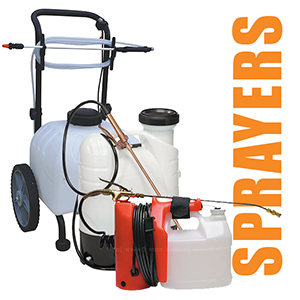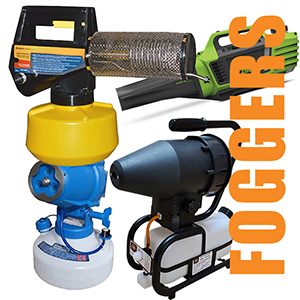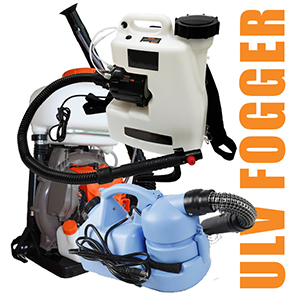So what should I look for?
When it comes to finding the right ULV Fogger for you, consider these questions;
How far does the unit spray?
Most units only fog about 4-5 ft. There are other units on the market that carry further, but require a cord because of the inefficient design. The SANI-Fogger can fog up to 50ft.
Can it be used indoors and outdoors?
Only the SANI-Fogger can work outdoors. Other foggers efficiency is greatly diminished with the slightest breeze. As for indoor use, a true electrostatic ULV fogger can be used around electronics and sensitive materials, but since there are no regulations regarding the labeling of these units, it is very easy to purchase fake products which can damage your business investments. The SANI-Fogger is a true electrostatic fogger.
Do I need a cordless system?
A corded system can run non-stop, but is not more powerful than most battery powered units, they require long extension cords creating hazardous environments including electrocution and trip hazards. Then there’s the issue of having to store the long cords or finding an outlet that allows you to get the job done.
Generally speaking batteries are contained within the units. This means that changing the batteries is an ordeal. The SANI-Fogger was designed with hot swappable batteries with as fast as 20 minutes charging cycles.
How do I carry the cleaning agent?
Foggers come in a variety of methods to hold liquid. Being mindful of the fogging environment as well as obstacles such as power cords, furniture, hoses, etc, they are configured with attached hoppers, purse styles, backpack styles, rolling carts, and other methods. If your fogger is a backpack configuration, consider the way the backpack is designed and how much weight your workers should carry at one time. The SANI-Fogger was designed for comfort and optimal efficiency. The SANI-Fogger hot swap chemical system allows for many pre-filled solution bottles to be changed in just seconds, keeping sanitizing at full efficiency. The chemical tank has quick-release attachments which make for easier swapping, storage, and maintenance.
What about quality control?
We have seen a fair share of foggers run through our shop from many manufacturers. Most knock-off brands are value engineered to a fault. These units could be considered simply disposable. The SANI-Fogger is a US made product that exceeds UL and CE requirements designed as an ISO 9002 product.


